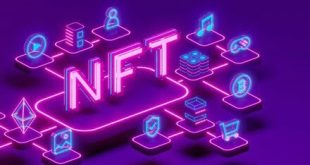Related Articles
Blockchain Basics: Understanding the Technology Behind Crypto
Blockchain technology is often hailed as the backbone of cryptocurrencies, but its implications extend far beyond digital currencies. At its core, blockchain is a decentralized, distributed ledger that records transactions across many computers in a secure, transparent, and immutable manner. Understanding blockchain is essential for grasping how cryptocurrencies function and the potential applications of this transformative technology.
What is Blockchain?
A blockchain consists of a series of blocks, each containing a list of transactions. Once a block is filled, it is linked to the previous block, forming a chain. This chain is stored across a network of computers, known as nodes, which ensures that the data is not controlled by any single entity. Each transaction is verified by consensus among the nodes, making the system highly secure against tampering and fraud.
Key Features of Blockchain
- Decentralization: Unlike traditional databases managed by a central authority, blockchains distribute data across multiple nodes. This decentralization enhances security and reduces the risk of system failure or data manipulation.
- Transparency: All transactions recorded on a blockchain are visible to all participants in the network. This transparency builds trust among users, as anyone can verify transactions independently.
- Immutability: Once a block is added to the chain, it cannot be altered or deleted without consensus from the network. This characteristic makes blockchain a reliable record-keeping system, ideal for applications requiring integrity and accountability.
- Security: Blockchain employs cryptographic techniques to secure transactions and control the creation of new units. Each block contains a unique hash (a cryptographic fingerprint) of the previous block, creating a secure link that is difficult to break.
How Blockchain Works
The process of adding a transaction to the blockchain involves several steps:
- Transaction Initiation: A user initiates a transaction, which is broadcasted to the network.
- Verification: Nodes in the network validate the transaction using consensus algorithms. The most common methods include Proof of Work (PoW) and Proof of Stake (PoS). PoW requires miners to solve complex mathematical problems, while PoS allows validators to create new blocks based on the number of coins they hold.
- Block Creation: Once verified, the transaction is grouped with others to form a new block.
- Block Addition: The new block is added to the existing chain and distributed across all nodes in the network.
- Completion: The transaction is confirmed, and all parties involved can see the updated ledger.
Applications Beyond Cryptocurrency
While cryptocurrencies like Bitcoin and Ethereum have popularized blockchain technology, its potential applications are vast:
- Supply Chain Management: Blockchain can enhance transparency and traceability in supply chains by allowing all participants to track products from origin to destination.
- Healthcare: Patient records can be securely stored on a blockchain, giving healthcare providers access to accurate and immutable data while ensuring patient privacy.
- Voting Systems: Blockchain can provide a secure and transparent way to conduct elections, reducing the risk of fraud and increasing public trust in the electoral process.
- Smart Contracts: These self-executing contracts with the terms written in code automate and enforce agreements without intermediaries, streamlining processes in various industries.
Challenges and Considerations
Despite its promise, blockchain technology faces several challenges, including scalability issues, energy consumption (especially with PoW systems), and regulatory uncertainty. As the technology matures, addressing these challenges will be crucial for widespread adoption.
Conclusion
Blockchain technology represents a fundamental shift in how we think about data and transactions. Its decentralized, transparent, and secure nature has the potential to revolutionize various industries beyond finance, making it a key area of interest for innovators, businesses, and governments alike. As we continue to explore its capabilities, understanding blockchain basics will empower individuals and organizations to leverage its full potential.



